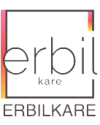
ABOUT ERBILKARE
Erbilkare was established in 2010 by Interior Architect Evrim Erbil. Born to a family of artists. Evrim returned to Turkey after completing his education in England. Erbilkare specialises in designing two and three dimensional art works for private art collectors and inventive projects.
Some of the mediums they work with are digital printing, silk screen, tapestry, etching, photography, oil painting, mosaic, marquetry, ceramics and stained glass. Studio uses a wide range of techniques and combines them with materials such as glass, mirror, aluminium, plexiglas and wood, Presently Erbilkare focuses on Giclée printing which is an high quality fine art printing technique and has gained a well-deserved reputation as a leader in this field. Erbilkare works with a group of artists which are well established in the Art World, with the company’s aim to turn spaces into a piece of art by promoting both art and the artist.
ERBILKARE & DEVRIM ERBIL
“Art is, firstly and always, about an idea and the technology is essential in realising these ideas offer fresh possibilities for expression.
Progress in technology creates new paths for these possibilities, thus expanding its scope and contributing to its diversity.
Invented by the Chinese Civilisation centuries ago, the printing technology came into use during the Renaissance of the North and has been appreciated in the hands of such masters as Albrecht Durer, Martin Schongauer, Rembrandt Harmenszoon van Riin and Francisco Goya. Dating from mid-19th Century, works by Edgar Degas, Toulouse-Lautrec, Paul Gauguin, Félix Vallotton, Mary Cassatt and many others had inspired interest in printmaking which was carried on by the later works of Pablo Picasso, Georges Braque, Henri Matisse, Marc Chagall, Joan Miro and Max Ernst and today, the printmaking is an essential part of visual arts owing to the works of Henry Moore, Graham Sutherland, David Hockney and many other Pop-Art artists. However the printmaking in Turkey had shown a very peculiar progress throughout the years and the works of Léopold Lévy, Sabri Berkel, Fethi Kayaalp, Mustafa Aslier, Mustafa Pilevneli, Ergin Inan and Devrim Erbil were definately the leading names.
Printmaking is based on creating images over the surface of a paper, fabric or aluminium material using various methods. These prints, with their unique property, are products of art. Techniques like engraving, lithography, serigraphy and digital printing, is an essential component of fine arts. Use of computers by the artists for generating and processing images is dating back to the early 1980s. Many artists, including Richard Hamilton, David Hockney and Sidney Nolan, had begun to use computers for creating printed images in that era. On the other hand, existence of commercial printing companies sparked off the emergence of a new market in art. While the Iris digital printer was the first digital printmaking equipment, these printers were being highly demanded for the unique features they offer. Consequently, the newer creation techniques also coexist together with the former ones in the history of art. In contemporary printmaking, while on one hand products are being created using classical printing techniques, the editions produced through digital printing techniques are increasing day by day. Giclée Prints are amongst the most prominent digital printing techniques used in the fine arts.
Nowadays we have Giclée prints in contemporary art museums and in collections, this means that a new era in printmaking has begun. The word Giclee was derived from the French verb Gicleur which means nozzle and was first coined by Jack Duganne in 1991. The reason for the adoption of this word was to distinguish this type of prints from those similar commercial practices. The word Giclée print had begun to appear increasingly in the tags of the works as of 2000s.
Founder of ErbilKare Evrim Erbil says “An impressive texture is created by continuously overprinting certain areas of the printing surface and one can derive a picturesque taste from artist’s works printed on reflective aluminium surface and with colours accumulated on certain areas”.
Evrim Erbil’s own way of using the machine seems quite unique. Only a single work is produced in one day at ErbilKare studio since it is a labor-intensive process and each art piece is monotype. First step in Giclée printing is to create the image of the original artwork as a digital file then the image is to be transferred to the Mac/PC. The monitor and the printer work in junction using the related hardware and software equipment in order to preserve colour fidelity and then an ICC profile is to be created for each printing surface, which enhances the authenticity of the print.
Aesthetic quality of the final print can be measured by the genius of the artist Devrim Erbil; and the finesse shown by the master Evrim Erbil combine the prints interactively. Evrim Erbil states “These three important interactions has to be present in the process: Graphic designer, mechanic and an artistic eye. Evrim Erbil embodies all these three qualities. It is a long and laborious procedure to achieve many combinations including the original file, data transfer, ink, surfaces and preservation processes; and, the slightest mistake could have consequences.
High relief Giclée prints displayed at Devrim Erbil’s exhibitions are a remarkable synthesis of the traditional and the new. Images in the artist’s mind transfer to the presentation media via technology which offers editing, control and re-digitalization processes for the sake of creative development. While the works are bearing the artist’s signature, Giclée print is an intermediate segment between standard print and the oil painting – a bit more accessible, yet offering a monotype possibility. A new exciting segment has entered the History of Turkish Printmaking. Devrim Erbil’s works with Evrim Erbil’s excellence adding a combination of UV, Giclée and relief, mark the beginning of a new technique to be much appreciated by the artists and collectors.




